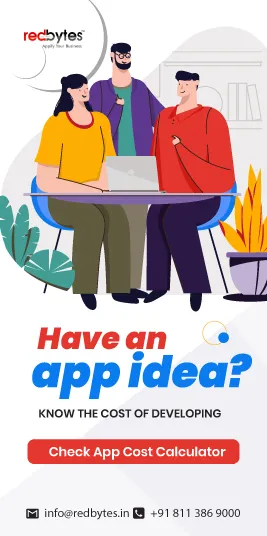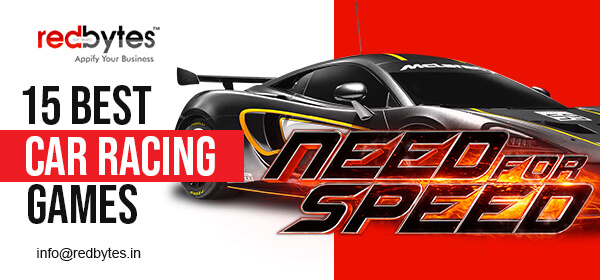‘Internet of Things’ is a network of devices that are connected to the internet. It is used to search any info, upload images and connect with people. Since these products are connected to the Internet, they have their own IP addresses and can connect with each other in order to automate tasks. IoT is basically the interaction between humans and machines that can unlock possibilities.
Key features of IoT
1) Can enable the services across several fundamental sectors in the economy
2) The needs of the customers are met through global distribution models and continuous global services.
3) It provides an opportunity to new commercial sectors to support mass global deployment
4) Value-added services will become the main factor to income and mobile operators are bringing in new capabilities to make this happen.
5) Mobile apps are leverging the IoT.
Building Blocks of IoT
The multiple building blocks of IoT are connected to operate and communicate:
Must Read:
Are Mobile Apps a Necessity Rather than a Luxury for SMEs?
1. Application and User Interaction
This generally involves the collaboration between people, applications and business processes.
2. Cloud Server
Cloud computing is the only platform that can support massive and unpredictable data. Cloud server supports IoT by providing network, storage and power. The massive data generated by IoT can be analysed within the cloud with proper data solutions.
3. Sensors
Sensors are devices that detect a wide variety of information and generate output as data to send via wireless technology. The IoT sensors are called as node that collects information and sends it through communication protocols like Bluetooth, Zig Bee, Z-wave, Wi-Fi and also, by wired communication.
4. IoT Gateway
IoT Gateway acts as a bridge between Internet and objects. They also provide the secure channel required for the transmission of data and usually run Real-Time Operation Systems (RTOS).
5. Connectivity(Network)
Internet connectivity is used with the connected device or with the connected hub, base station or the smart phone.
6. Energy-Efficiency
Many devices in IoT might be difficult, dangerous and costly in terms of charging or replacement of the battery. Therefore, they are operated for a year or are able to wake up only periodically to relay data.
7. Security
Data security is a critical component in case of IoT since it deals with many confidential and case sensitive data.
The way consumers live, work, and play is changing and is reshaped each day with the connected devices. Use of intelligence and connectivity to everything we use can produce enormous amounts of data that companies can use for:
• Improving their operations
• Creating new ways of doing business
• Better ways to serve their customers
The growth of IoT is becoming a reality faster than we can imagine. Retailers who hesitate to use them are opening ways for promoting other competitors to swoop in and capture the market.
The IoT movement provides the retailers opportunities in different critical phases like:
• Customer Experience
• Optimising Supply Chain
• New channels and revenue stream
Customer Experience
IoT provides an opportunity for retailers to develop a vastly improved ecosystem in the industry. It connects with the digital world allowing real-time interaction with consumers both inside and outside the retail store.
The increasing demand of smart phone will be a platform for these interactions. This is either done through location-based beacon technology, which retailers use to interact with customers directly as soon as they enter the store. Apple’s iBeacon technology is already used by brands like Lord & Taylor, Hudson Bay, mobile marketing platform called Swirl etc. to deliver promotions to their customers.
By the interaction acquired through IoT, retailers can leverage the data to improve the customer experience. The brand named Hugo Boss has already started using heat sensors in their clothing store to track the movement of the customers. This will help them to arrange products in the right way according to the high-traffic areas.
Optimising Supply Chain: In more complex supply chains and increasing digital channels, the connected devices and products provide the retailers the opportunity to optimise certain operations. For example, RFID (Radio-frequency identification) Technologies can improve the precision of inventory tracking by using the electro-magnetic fields to identify and track objects.
Integrating IoT can also reduce costs and help in improving store operations. Lighting and temperature control within the store can be maintained using sensors to provide customer support and more cost effective energy use. Using sensors, many of the functions that employees currently perform manually, such as tracking inventory, changing prices tags items can increase the store experience.
Creating News Channels and Revenue Streams
The news system of IoT provides new opportunities to the retailers to create new revenue systems. Products such as household appliances, comfort products, home security, health and wellness etc. are becoming a main part of the IoT system.
Lowe’s, a store for home décor and appliances have launched a new platform called the Iris platform that can communicate with different devices like Z-Wave etc. This was designed with an open interface where the manufacturers could integrate their products. Home Depot’s Wink and Staples’ Connect are other platform examples that use the IoT management system.
How to make IoT a Reality in the Retail Industry?
At the beginning, you may find it difficult to move on with the Internet of Things strategy. It might be hard to accommodate a new device into the existing complex IT infrastructures. In order to lay foundation of IoT support, you need to mainly concentrate on two areas:
1. Technology
2. Organization
Technology
Technical capabilities are critical for IoT functions. To get the maximum out of the IoT devices, IT firms will have to develop existing investments in key areas such as analytic infrastructures, customer-facing problems etc.
Applications
1) Development and debugging tools
2) App factories
3) API management strategies to provide the business with API and visibility capabilities
4) Embedded operating system
Organization
A well-organized company with the right culture, talent, governance and organizational structure is one of the most important ways to drive IoT strategy. IT and technology should work together to leverage the technical aspect of IoT.
Key organisational elements
• Clear understanding of the business strategy
• Approach that promotes impact and potential benefits of IoT
• IoT enabled solutions should be designed and implemented with business needs in mind
• Repeated testing
Technological Challenges for IoT
• Device Management
• Device diversity and interoperability
• Integration of data from multiple sources
• Data volume and performance
• Flexibility and evolution of applications
• Data Piracy
Examples of IoT In Retail Industry
IoT provides retailers with a whole lot of new experiences; but, the fundamental objective remains the same as that of the traditional retailing industry. Wearable’s form a part of the Internet of Things using bluetooth, devices like Smart watches or other devices that connect to iPhone/Android uses internet apple watch, glasses etc. which can be connected to the smart phones and any sort of data can be transferred between the devices.
Some of the examples where IoT was used include:
1) Rebecca Minkoff used smart mirrors in dressing rooms
To bring out the actual concept of a connected store, Rebecca has introduced smart mirrors in her in-store dressing rooms. The items in her store contain RFID tags which help in the recognition of an item. The product details can be pulled up to the smart mirror which shows the different style of the item with the available size and colours.
2) ‘Target’ has now introduced beacons for shoppers
Across around 50 stores target has introduced the usage of beacons to make hyper-local content accessible to shoppers via ‘Target Run’. The customers who have downloaded the target app can connect it to the bluetooth and receive notifications of products as push-notification.
3) Amazon launched dash button for Dash Replenishment Service
The dash replenishment service uses sensors built into devices like washing machines, pet feeders etc. to automatically reorder placement products. Through the new service, Amazon aims at making commerce so seamless for their customers.
4) Ralph Lauren’s PoloTech Shirt tracks Heart Rate and Calories Burned
Ralph Lauren has introduced Polo-tech t-shirt, a smart workout shirt that monitors the vital activity stat of the wearer in real-time. The black-box filled with sensors that are snapped into a place near the rib cage will allow syncing the data to the iOS app. This will allow the customers to track the biometrics and also to calculate the data of their daily workouts.
IoT challenges for retailers and the future journey
In 2016, according to IDC, the amount spent on IoT was at $737 billion and the forecasted rate that it would reach is about $1.29 trillion in the coming years. Currently, IoT is seen on enterprises with transportation, manufacturing and utilities.
The most difficult thing a company has to manage is how to overcome, analyse and act relevantly on the data connectivity with different devices. Simply collecting the data is not just enough but, the retailer has to transform it into useful information.
At this starting stage, the main thing retailers need to realise is that IoT is not just about sensors and connectivity, but is the output got from a business by creating new experiences. The true transformation occurs when you start exploring through the network of IoT strategy with your network of customers, suppliers, assets and extended ecosystem.














